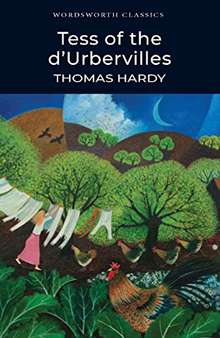Sensitivities about topics, events and language in texts have created controversies for as long as texts have been published. Books have been forbidden, banned and burned throughout history, and continue to be so, despite a near widespread approval of free speech. We have commented on this a couple of times over the last year or so, discussing free speech and censorship.
Not only has there been an argument about what people should be allowed to read, but there has been the creation of the role of Sensitivity Reader in publishing houses and an increase in what have become known as trigger warnings. In this way, potential readers are warned about content which may offend or cause distress.
Is this an act of thoughtfulness and consideration, or is it patronising? That is a question with heightened relevance when it concerns academic courses, especially university courses and reading lists.
The View that Warnings Are Patronising
Tory politicians seldom miss an opportunity to wade into an educational debate, and Liz Truss said, ‘Universities should not be mollycoddling students like this. It patronises them and is not good for wider public debate.’ Truss is not alone, however. A professor at Oxford University, Kathryn Sutherland, suggests that highlighting problematic texts removes a core part of education itself, saying:
To ask academics to submit books into a category labelled ‘problem’ is to ask us to abdicate a responsibility that lies at the core of what universities are for: spaces for growing up, rather than growing less.
Several websites exist which provide trigger warnings for texts. At booktriggerwarnings,com, nearly 8500 texts are listed. We might find some of them rather comic. Who would have thought, for example, that an Agatha Christie Miss Marple murder mystery might contain both Murder and Death?
Let’s look at some other texts which are potentially dangerously shocking. There’s that radical writer Jane Austen. We apparently need to know before we read Pride and Prejudice (1813) that it might appal us with its Classism and Sexism. Meanwhile, Thomas Hardy’s Tess of the d’Urbervilles (1891) is a highly dangerous mix, containing:
- Alcoholism
- Death of a child
- Forced marriage
- Homelessness
- Harassment
- Illness
- Loss
- Murder
- Rape
 To be fair, Hardy was a contentious novelist in his time, so let’s turn our attention to Shakespeare. Let’s take first one of his lightest comedies, A Midsummer Night’s Dream. Beware! It includes Bestiality (implied), Drugging and Sexism (remember, Titania the Fairy Queen wakes up with magic potion in her eyes and falls in love with a working man who has been temporarily transformed into a donkey through more magic.)
To be fair, Hardy was a contentious novelist in his time, so let’s turn our attention to Shakespeare. Let’s take first one of his lightest comedies, A Midsummer Night’s Dream. Beware! It includes Bestiality (implied), Drugging and Sexism (remember, Titania the Fairy Queen wakes up with magic potion in her eyes and falls in love with a working man who has been temporarily transformed into a donkey through more magic.)
Of course Hamlet is a different matter altogether, as it dramatises:
- Anxiety
- Death
- Depression
- Kidnapping
- Madness (pretended)
- Manipulation
- Murder
- Suicide
- Violence
There was some hilarity about the University of Greenwich, which slapped trigger warnings on Jane Austen’s Northanger Abbey, a novel which, as the article explains, concerns ‘a young woman, Catherine Morland, as she comes of age in Regency Britain. It is a satire that wryly mocks gender roles in literature written by men.’ It continues:
At one point in the book, Austen comments on women having to feign being stupid to please men, writing that ‘a woman especially, if she has the misfortune of knowing anything, should conceal it as well as she can’.
This is, of course, a reference to Sexism, about which the University believes any student ought to be warned. Professor Dennis Hayes, at a rival university and director of the campaign group Academics For Academic Freedom, believes such an approach is ‘infantilising’ students:
Universities should put up one simple statement: ‘Trigger warning – this is a university, you must expect to be offended.’
Warnings Can be Valuable
 However, the argument doesn’t all go one way, even among academics. Professor John Sutherland is an esteemed writer and Professor of Modern English Literature at University College London. In this article, he argues that sensitivity warnings correctly indicate that ‘literature itself can be dangerous but it can also change your life’. They are in themselves a testament to the power of literature. He is careful, though, to discriminate between content warnings and censorship:
However, the argument doesn’t all go one way, even among academics. Professor John Sutherland is an esteemed writer and Professor of Modern English Literature at University College London. In this article, he argues that sensitivity warnings correctly indicate that ‘literature itself can be dangerous but it can also change your life’. They are in themselves a testament to the power of literature. He is careful, though, to discriminate between content warnings and censorship:
You learn a lot from literature and it seems to me the notion of a trigger which honours the power of literature is a good thing.
What’s a bad thing is cancellation, saying that literature is so bad… that we can’t read it.
This piece starts with a telling anecdote about the Jimmy Fallon show to argue that a trigger warning ‘gives the audience a modicum of control over if and how they engage’, which, Lindy West argues, is a valuable service.
Dr Onni Gust is a British Empire historian at the University of Nottingham. She is happy both to use trigger warnings and acknowledge her use of them, rebuffing the Truss ‘mollycoddling’ idea. She argues that it is about allowing students to make informed choices and to prepare their awareness:
A trigger warning does not give permission for students to skip class, avoid a topic or choose alternative readings. What it does do is signal to survivors of abuse or trauma that they need to keep breathing. It reminds them to be particularly aware of the skills and coping strategies that they have developed and to switch them on.
Further Problems with Warnings
While the debate seems balanced, there have been some thoughtful developments. Some commentators have pointed out that the very existence of such warnings begins to shape a reader’s experience of the text. Rather than a completely open approach, the reader will approach such a text with certain preconceptions. As this article points out, a trigger warning
…sets the tone for reading and understanding the book. It skews students’ perceptions. It highlights particular issues as necessarily more upsetting than others, and directs students to focus on particular themes that have been singled out by the professor as traumatic.
In a world where different points of view often lead, not to online debate, but to online vitriol, Jill Filipovic observes:
But students should also accept the challenge of exploring their own beliefs and responding to disagreement. Trigger warnings, of course, don’t always shut down that kind of interrogation, but if feminist blogs are any example, they quickly become a way to short-circuit uncomfortable, unpopular or offensive arguments.
Interestingly, this additional area of concern has been supported by research. This article refers to a study at Harvard University showed that:
…people who received trigger warnings felt greater anxiety reading the same passages as people who did not receive trigger warnings. Another study found trigger warnings may prolong the distress of negative memories.
The argument that such warnings may ‘harm the people they are intended to protect’ is developed by social psychologist Professor Jonathan Haidt, who points out that they counter the fundamental principles of psychology which argue that overcoming a fear, phobia or trauma is best achieved by exposure therapy, not avoidance.
Students who call for trigger warnings may be correct that some of their peers are harbouring memories of trauma that could be reactivated by course readings. But they are wrong to try to prevent such reactivations.